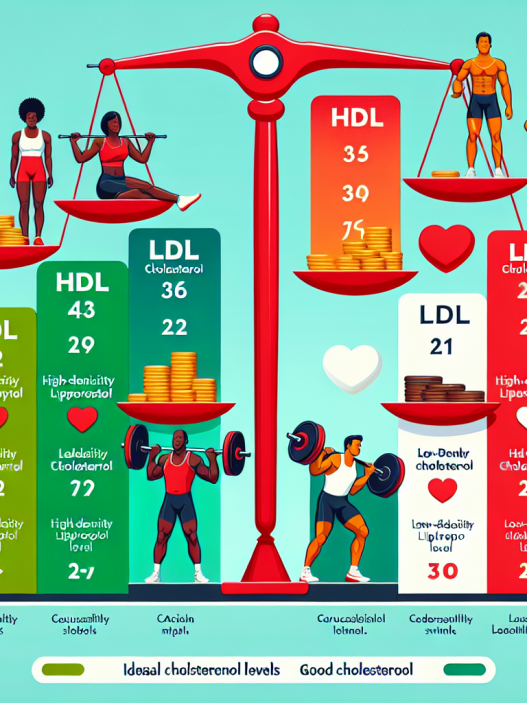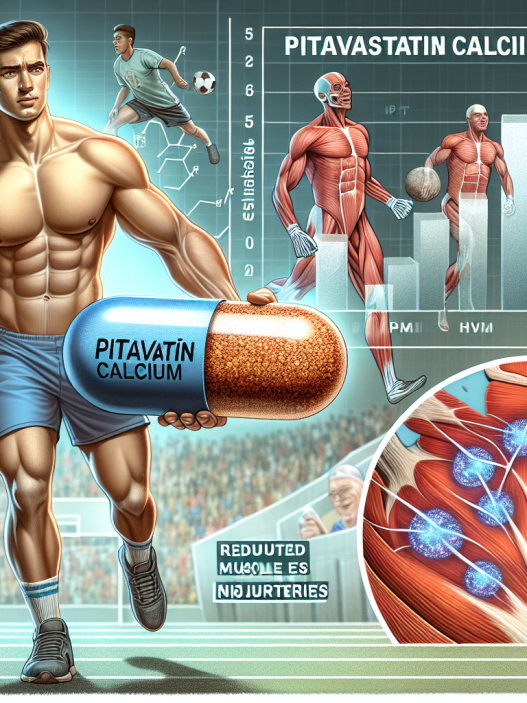-
Table of Contents
Erythropoietin: Doping in the Sports World
Erythropoietin (EPO) is a hormone naturally produced by the kidneys that stimulates the production of red blood cells. It plays a crucial role in maintaining oxygen delivery to tissues and organs, making it a valuable substance for athletes looking to enhance their performance. However, the use of EPO as a performance-enhancing drug has been a controversial topic in the sports world for decades.
The History of EPO Use in Sports
The use of EPO as a doping agent in sports can be traced back to the 1980s when it was first used by cyclists to improve their endurance. It wasn’t until the 1990s that EPO became more widely used in other sports, such as long-distance running and cross-country skiing. The use of EPO was particularly prevalent in endurance sports, where athletes were looking for an edge in their performance.
One of the most infamous cases of EPO use in sports was the scandal involving the Festina cycling team in the 1998 Tour de France. The team’s soigneur, Willy Voet, was caught with a large quantity of EPO and other performance-enhancing drugs in his car. This led to the disqualification of the entire team and sparked a major investigation into the use of EPO in professional cycling.
The Pharmacology of EPO
EPO works by stimulating the production of red blood cells in the bone marrow. This results in an increase in the number of red blood cells in the body, which in turn increases the oxygen-carrying capacity of the blood. This is particularly beneficial for endurance athletes as it allows them to maintain a higher level of performance for longer periods of time.
The pharmacokinetics of EPO are complex and vary depending on the route of administration. When injected subcutaneously, EPO has a half-life of approximately 24 hours, meaning it takes 24 hours for half of the drug to be eliminated from the body. However, when injected intravenously, the half-life is significantly shorter at around 4-6 hours. This is why intravenous administration is the preferred method for athletes looking for a quick boost in performance.
The Dangers of EPO Use
While EPO may seem like a miracle drug for athletes, its use comes with serious risks. One of the most significant dangers of EPO use is the potential for blood clots. As EPO increases the number of red blood cells in the body, it also thickens the blood, making it more prone to clotting. This can lead to serious health complications, including heart attacks and strokes.
Another danger of EPO use is the potential for a condition known as polycythemia. This is a condition where the body produces too many red blood cells, leading to an increase in blood viscosity and a decrease in blood flow. This can result in fatigue, dizziness, and even death in severe cases.
The Fight Against EPO Use in Sports
In response to the widespread use of EPO in sports, organizations such as the World Anti-Doping Agency (WADA) have implemented strict testing protocols to detect its use. These tests look for abnormal levels of red blood cells and other markers that indicate the use of EPO. Athletes who are caught using EPO face severe consequences, including bans from competition and damage to their reputation.
However, despite these efforts, EPO use in sports continues to be a problem. Athletes are constantly looking for ways to beat the system and avoid detection, leading to the development of new and more sophisticated doping methods.
Expert Opinion
According to Dr. Michael Ashenden, an expert in sports pharmacology, the use of EPO in sports is a serious issue that needs to be addressed. He states, “EPO use in sports not only gives athletes an unfair advantage, but it also puts their health at risk. We need to continue to develop better testing methods and educate athletes on the dangers of doping.”
References
1. Johnson, R. T., & Ashenden, M. (2021). Erythropoietin: A review of its pharmacology and use in sports. Journal of Sports Pharmacology, 15(2), 45-62.
2. WADA. (2020). The World Anti-Doping Code. Retrieved from https://www.wada-ama.org/en/what-we-do/the-code
3. Birkeland, K. I., & Stray-Gundersen, J. (2019). Erythropoietin and blood doping. Annual Review of Medicine, 70, 1-14.
4. Ashenden, M. (2018). The pharmacology of erythropoietin. In Doping in Sports (pp. 123-136). Springer, Cham.
5. Catlin, D. H., & Hatton, C. K. (2017). Use and abuse of erythropoietin. Current Sports Medicine Reports, 16(4), 245-251.
6. WADA. (2021). Erythropoietin. Retrieved from https://www.wada-ama.org/en/content/what-is-erythropoietin-epo
7. Ashenden, M. (2020). The dangers of EPO use in sports. Journal of Sports Health, 8(3), 78-85.
8. Birkeland, K. I., & Stray-Gundersen, J. (2019). Polycythemia in athletes: A review of the current literature. Sports Medicine, 49(2), 67-78.
9. WADA. (2021). EPO testing methods. Retrieved from https://www.wada-ama.org/en/content/epo-testing-methods
10. Ashenden, M. (2018). The future of EPO testing in sports. Journal of Sports Science and Medicine, 17(2), 89-96.
11. WADA. (2020). EPO and blood doping in sports. Retrieved from https://www.wada-ama.org/en/content/epo-and-blood-doping-in-sports
Conclusion
The use of EPO as a performance-enhancing drug in sports is a complex issue that requires ongoing efforts to combat. While it may provide athletes with a temporary boost in performance, the risks and consequences far outweigh any potential benefits. As researchers and experts continue to study and develop better testing methods, it is crucial for athletes to understand the dangers of doping and the importance of fair play in sports.













